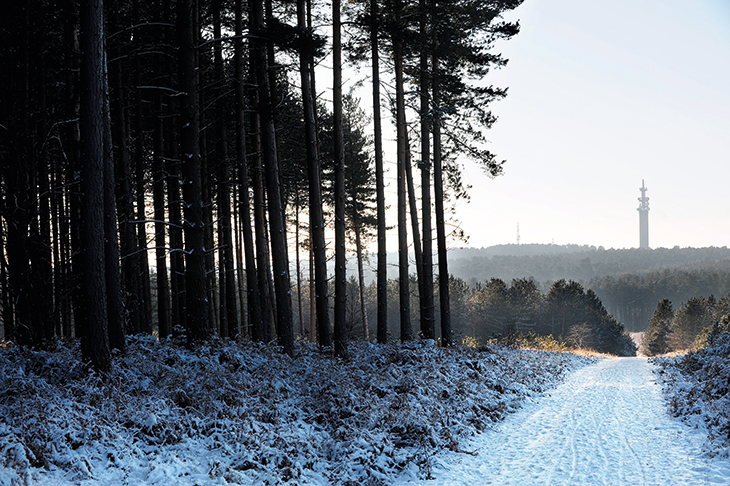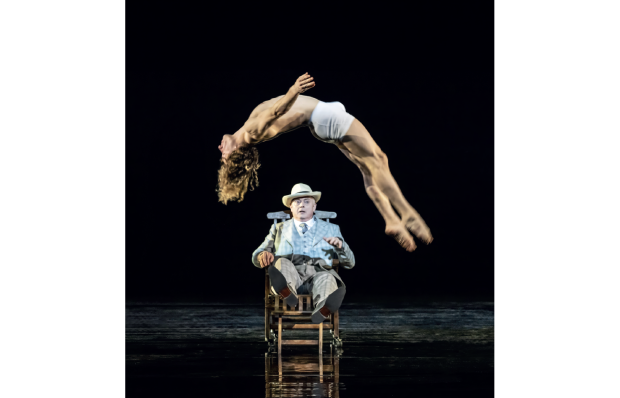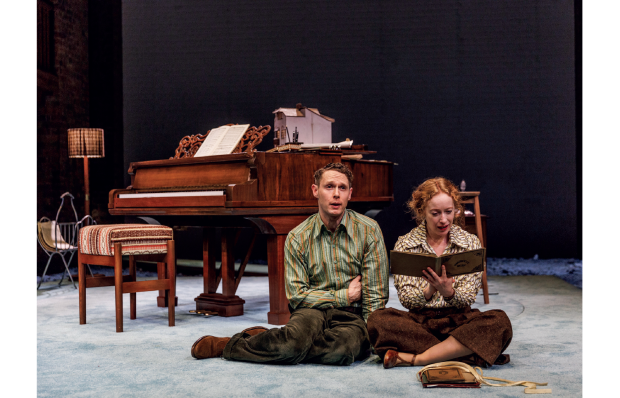Cannock Chase is the long, low range of hills that’s visible to your right as you drive north up the M6 beyond Birmingham. If you’ve travelled by train between Euston and Crewe, you’ve practically brushed its cloak. Soon after Rugeley the landscape closes in, and a palisade of dark pines presses down the slope before your Pendolino ducks into the tunnel that Lord Lichfield made Robert Stephenson dig in 1846 so as not to spoil the landscape of his Shugborough estate. You don’t see much of the Chase, but you certainly sense it.
It’s an Area of Outstanding Natural Beauty, but that feels rather an effete description for something so unexpectedly primal: an isolated upland wilderness between Wolverhampton and Stafford. Of course, when the sun shines, the Chase really is beautiful. Milford Common, at its northern fringe, attracts dog walkers and ice-cream vans (for added retro charm, it’s also got a drive-in Wimpy bar). From childhood visits to my grandmother in Stafford I remember sunlight sloping through Scots pines, and catching black beetles in the bracken. The name evoked Joan Aiken’s The Wolves of Willoughby Chase, and on winter afternoons it’s fun to imagine hungry packs swarming down to pick off unwary pedestrians in Colwich or Upper Longdon.
But generally, Cannock Chase rebuffs romanticism. It’s bounded to the south by former colliery towns, and if you climb to its highest point, the hill fort at Castle Ring, you’ll find yourself staring down the cooling towers of Rugeley power station. There’s not much literature of its landscape, though Tolkien lived at Great Haywood, where an Elizabethan packhorse bridge crosses the River Trent at its prettiest and most playful, and with the Chase rising grimly behind landscaped parkland, Shugborough Hall could easily be his ‘last homely house’. The great Jacobean mansion of Beau-desert once reigned over the southern Chase, but it was demolished in the 1930s. Its bricks went to London to repair St James’s Palace, and the surviving ruins are eerie when they rear up before you in a woodland clearing.
Tales of UFOs and mysterious big cats come as standard round here (the talk in my Lichfield local was of a ‘Staffordshire Sasquatch’, though you’re more likely to collide with a red deer). But the historical facts are haunting enough. During the Great War, troops trained on the Chase and in 2013 archaeologists uncovered a scale model of the trenches around Messines, dug out of peat to help familiarise officers with the Front. The south-western edge is dominated by the hulking Pye Green telecoms tower — built during the Cold War to withstand a nuclear blast — and a war cemetery for Germans who died on British soil.
Compared with Commonwealth war graves, their grey headstones look particularly sombre. Zeppelin pilots, drowned sailors and prisoners who died of the 1918 flu rest beneath silver birches. It’s said the location was chosen because of its similarity to Lüneburg Heath or the Teutoburger Wald. Cold comfort, but Cannock Chase shrugs off human concerns. When you’re lost at its centre, forested ridges roll away to every horizon, and the words that come to mind aren’t Tolkien’s, but Thomas Hardy’s description of Egdon Heath: a landscape ‘slighted and enduring; and withal singularly colossal and mysterious in its swarthy monotony’.
Got something to add? Join the discussion and comment below.
Get 10 issues for just $10
Subscribe to The Spectator Australia today for the next 10 magazine issues, plus full online access, for just $10.
You might disagree with half of it, but you’ll enjoy reading all of it. Try your first month for free, then just $2 a week for the remainder of your first year.














Comments
Don't miss out
Join the conversation with other Spectator Australia readers. Subscribe to leave a comment.
SUBSCRIBEAlready a subscriber? Log in